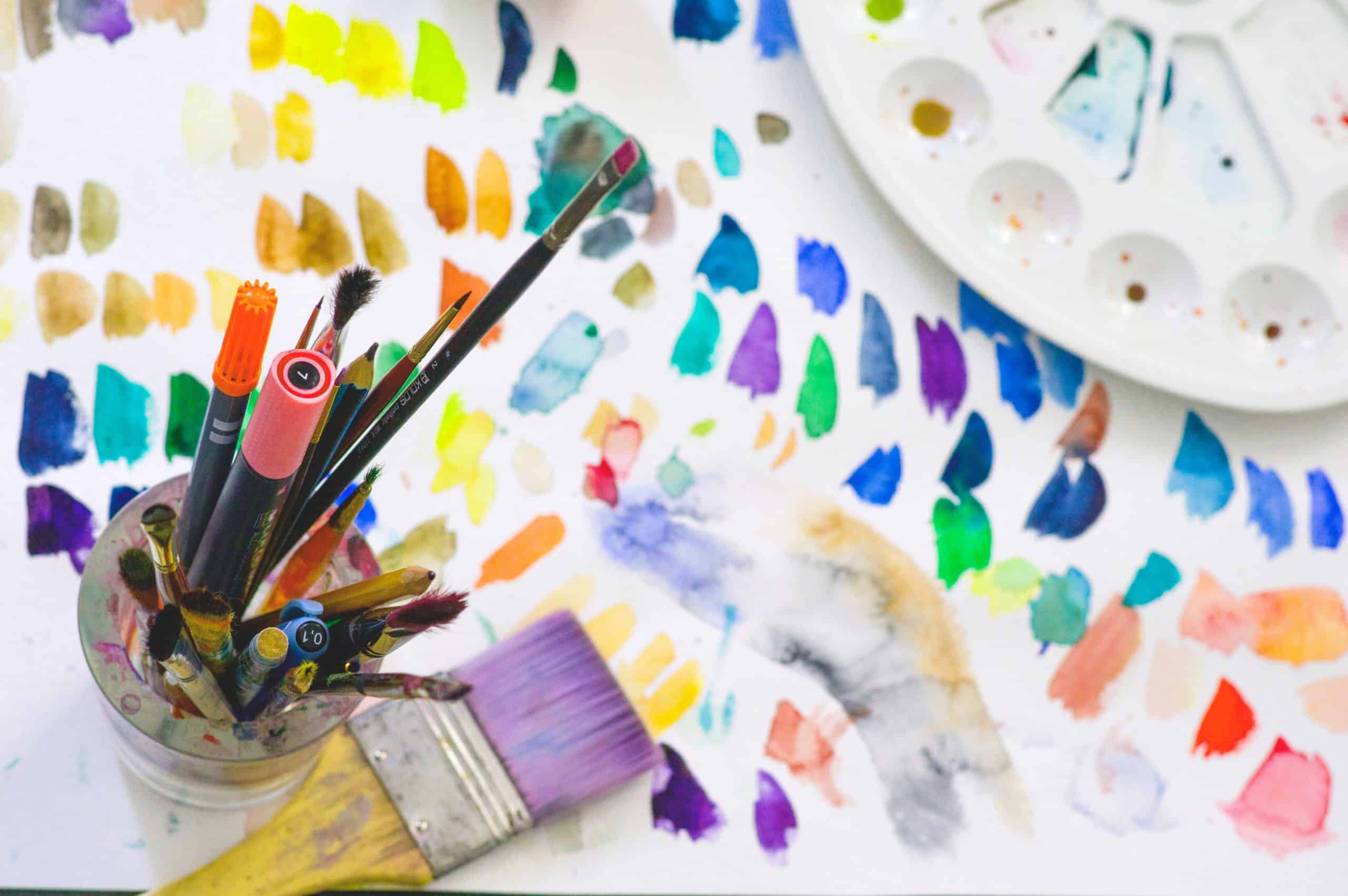
(Pinterest, 2021)
How can the Arts be used as a Developmental Tool?
The arts are a highly effective tool in enhancing and facilitating children's development. Klerfelt (Klerfelt, 2011) explains the arts as a way for children's 'mental capacities' to be aroused, allowing them to become stimulated through their creative works.
Five disciplines make up the arts within the Australian Curriculum; drama, music, visual arts, dance, and media ("The Australian Curriculum", 2021). Despite the fact that there are five disciplines, Holochwost et al. urge teachers and pre-service teachers to look at the distinctions between art forms, and again further distinction within those art forms (Holochwost et al., 2021). An example of this would be visual arts; within visual arts, there is painting, sculpting , and drawing, however you can paint with various textures of paint and on different surfaces, you can use various forms of clay, and you can draw with charcoal, coloured pencils, and watercolour pencils. Educating children about these different distinctions while also allowing them to use these is important in creating a connection in a child's creative thinking and cognitive skill.
Although a lot of literature demands attention for the cognitive and emotional benefits of the arts, there are many more developmental factors for both early childhood and primary aged children to enhance. One of the largest areas are fine and gross motor skills. When children are given a visual arts activity, they make use of their hands, wrists, arms and fingers to create their creative piece, alternatively, children who engage in choreographed dance utilise their gross motor skills to perform their movements, practicing fundamental movement skills ("The Australian Curriculum", 2021).
If a child shows 'no interest' in a creative activity, they may actually be communicating in this way. For example, if the class has been asked to participate in a group dance activity where they are to choreograph their own dance, there may be a child (or multiple) who do not show enthusiasm to the task. Instead of labelling this as lazy or inactive, educators should take this opportunity to converse with the child. Instead of disinterest, the child may be experiencing their own moment of creativity. Relating back to the example, instead of physically dancing and interacting with the music, they may be visualising different pictures or even observing how their peers are interacting with the activity and each other. Bresler and Thompson (Bresler & Thompson, 2005) have described this particular moment as a child's notice for "subtleties in learning", classing this as a "network of associative meaning".
References
Bresler, L., & Thompson, C. (2005). The arts in children's lives. Kluwer Academic Publishers.
Holochwost, S., Goldstein, T., & Wolf, D. (2021). Delineating the Benefits of Arts Education for Children’s Socioemotional Development. Frontiers In Psychology, 12. https://doi.org/10.3389/fpsyg.2021.624712
Klerfelt, A. (2011). Call for Articles: Special Edition of the International Journal of Early Childhood on ‘Early Childhood Arts Education’. International Journal Of Early Childhood, 43(2), 185-186. https://doi.org/10.1007/s13158-011-0036-8
Pinterest. (2021). [Image]. Retrieved 13 September 2021, from https://i.pinimg.com/originals/98/28/d4/9828d4cf187f7c1aa5e80323ba129052.jpg.
The Australian Curriculum. Australiancurriculum.edu.au. (2021). Retrieved 29 August 2021, from https://www.australiancurriculum.edu.au/.
 |
| (Pinterest, 2021) |
The arts are a highly effective tool in enhancing and facilitating children's development. Klerfelt (Klerfelt, 2011) explains the arts as a way for children's 'mental capacities' to be aroused, allowing them to become stimulated through their creative works.

No comments:
Post a Comment